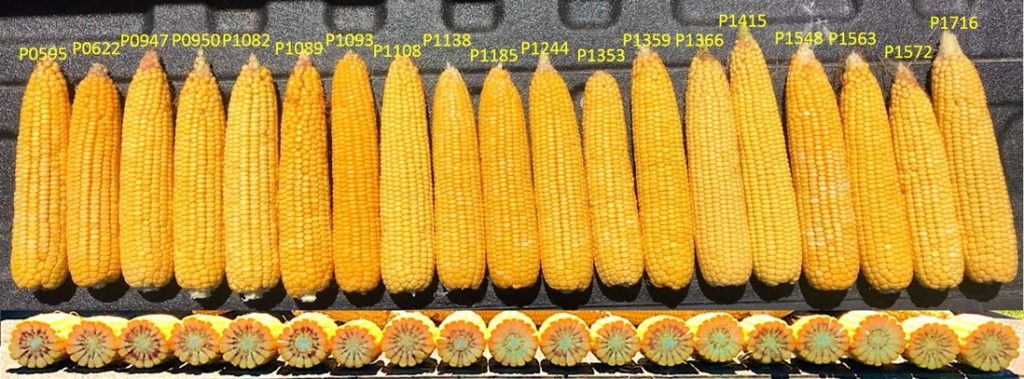Folks who sell seed corn for a living often get excited about sharing photos or actual specimens of their products – for example, ears of a new corn hybrid. Some braggadocio is expected but any grower with experience knows they are NOT showing off the average ear. In a survey of 1,000 growers, I would guess that 999 would scoff at an ear sample or ear photo presented to them by a seeds salesman believing it to be typical of any field environment (the 1 true believer likely being a family relative). They know full well that the sales person walked into the field, scouted around for an abnormally large ear, and then brought it out proclaiming it the savior of corn production ills across the fruited plains.
Hey, we’re a competitive bunch! The competition does it all the time and we’re not going to just stand by and let it go. If they post a photo of 22 rows around, then, by God, we’ll post one with 24. Test weight of 62, you say? How about my hybrid that went 63 in the plot? This one-upsmanship can get a little annoying but in small doses keeps it interesting. In large doses, you’re just being a used car salesman and nobody’s interested. Building excitement and creating momentum is part of sales. We want customers, existing and prospects, to notice and hopefully ask about the very products we’re bragging about.

One of the key principles in seedsmanship is representing products honestly. Is cherry picking ears dishonest? Maybe in the purest sense, but most seedsmen (male and female) know that it’s okay when presented with context. The ear with 22 rows and 60 kernels per row that magically appeared after just a few minutes in a corn field will always be met with skepticism and an eye roll. But when you admit that you picked the best you could find, most folks take the ear sample to represent its genetic potential. That’s right – if the environment is just right, a lot of ears could look like this. Experience shows that his type of presentation can generate a lot of interest from growers. Keep it exciting but keep it honest!

In the ear collection photo above, the author shared with readers that he chose the largest ears of each hybrid. The experienced eye can’t help but be impressed. Image 35,000 of these ears per acre? If that were the case, yields would probably eclipse 400 bu/a. But imagine if he collected the smallest ears he could find. If the largest ears represent genetic potential then what do the smallest ones represent? You got it – the genetic potential to be small. The combination of small, medium and large ears in a field is what a grower harvests. That’s the reality of fields with varying soil types. Agronomists make a living trying to minimize the number of small ears and maximize the number of large ones.

Salesmanship is one thing. Sales support is another. Service calls are part of the business. Growers may send you pictures or bring you ears of corn and perhaps a complaint about performance. While the seedsman can be criticized for cherry picking, in a way, so can the grower. Often in my career, a customer has brought ears that were cherry picked to exaggerate the field condition. This is somewhat understandable as poor product performance can be emotional and will certainly have a negative impact on profitability. But in all my years of working in the seed industry, the field is rarely as bad as the ears that were presented to me. But they did get my attention – which is what cherry picking is all about!
I want you to do well. ~ph

